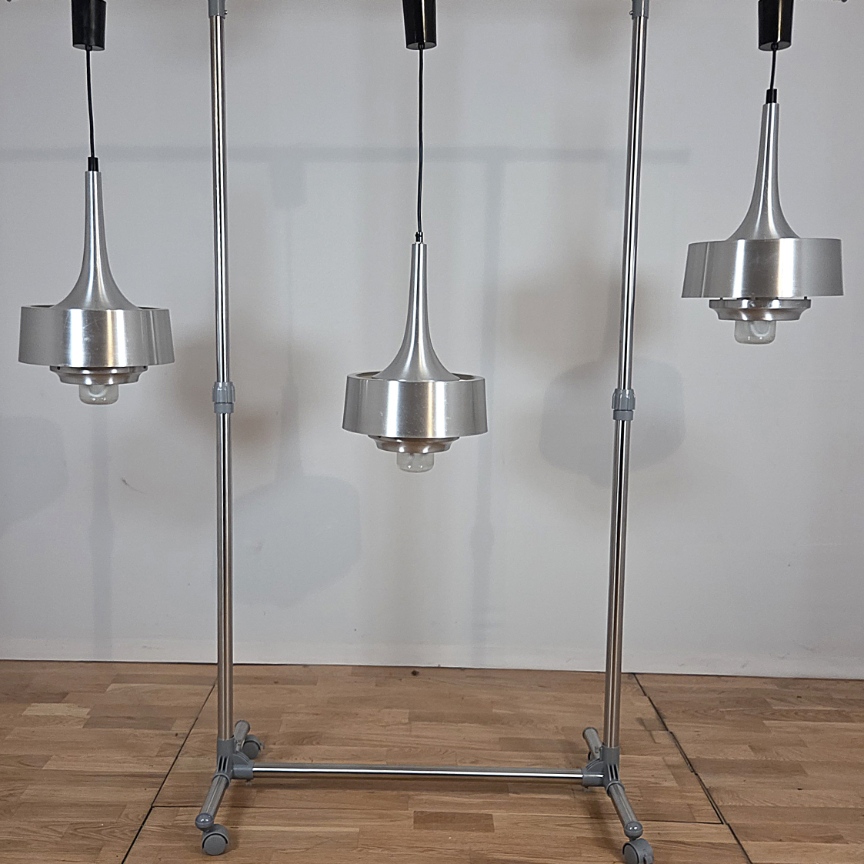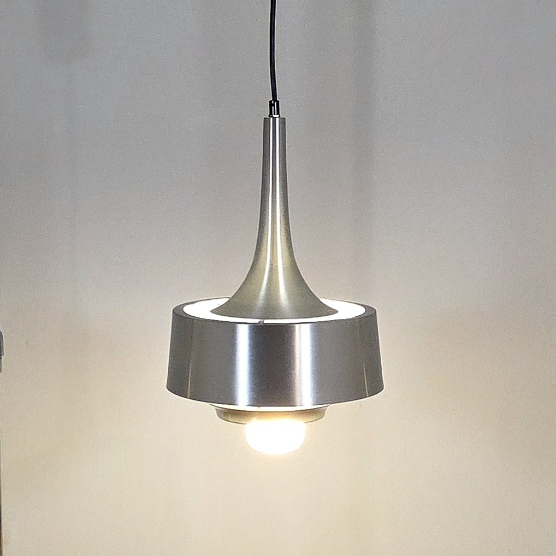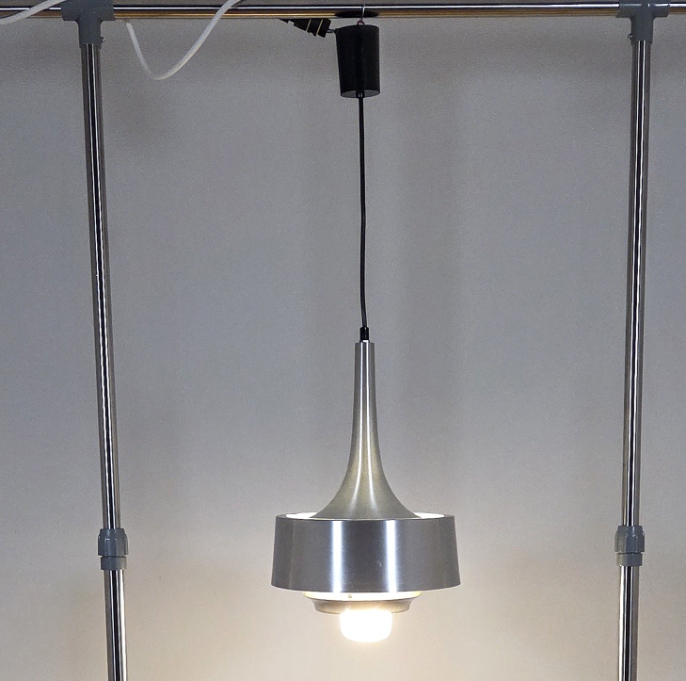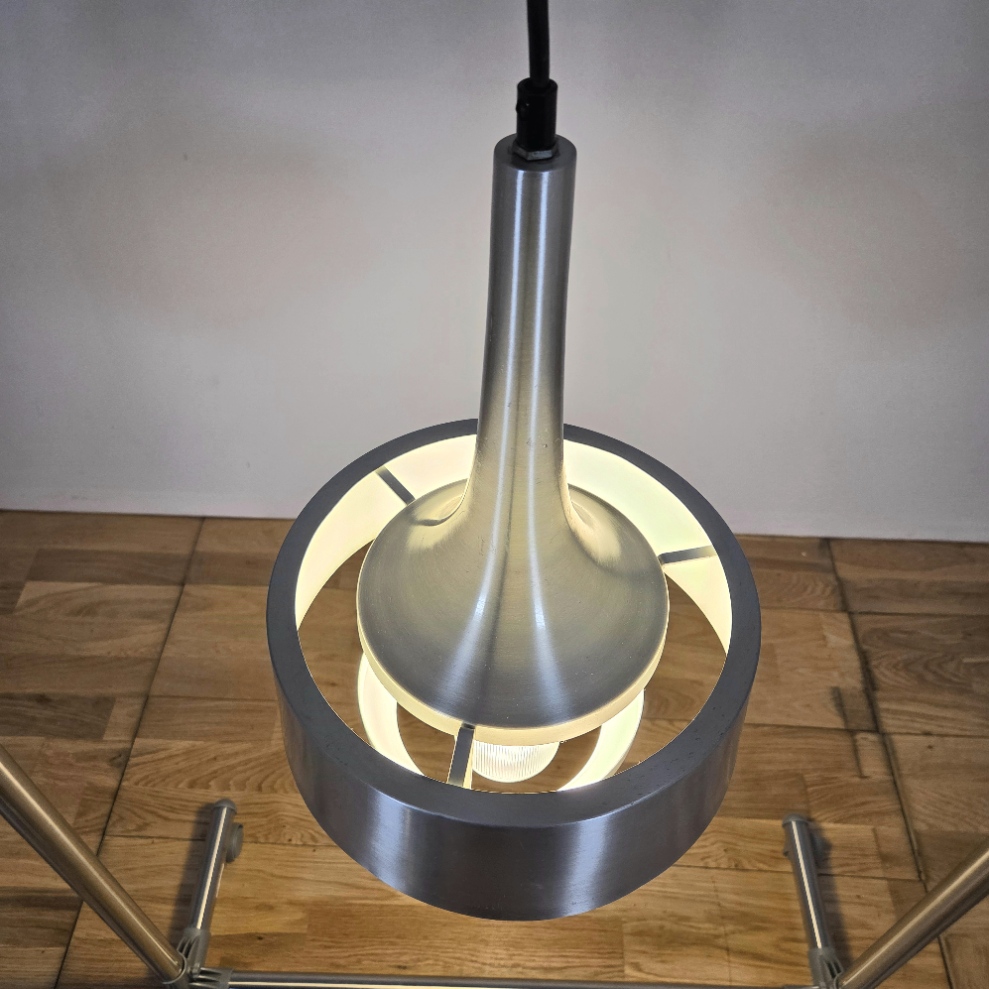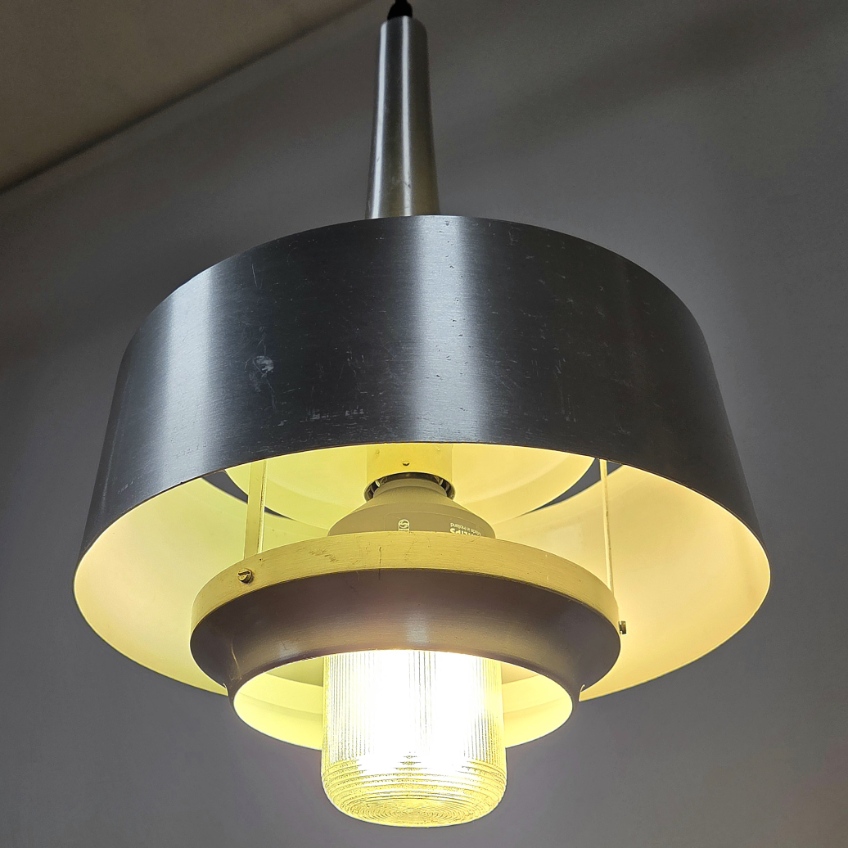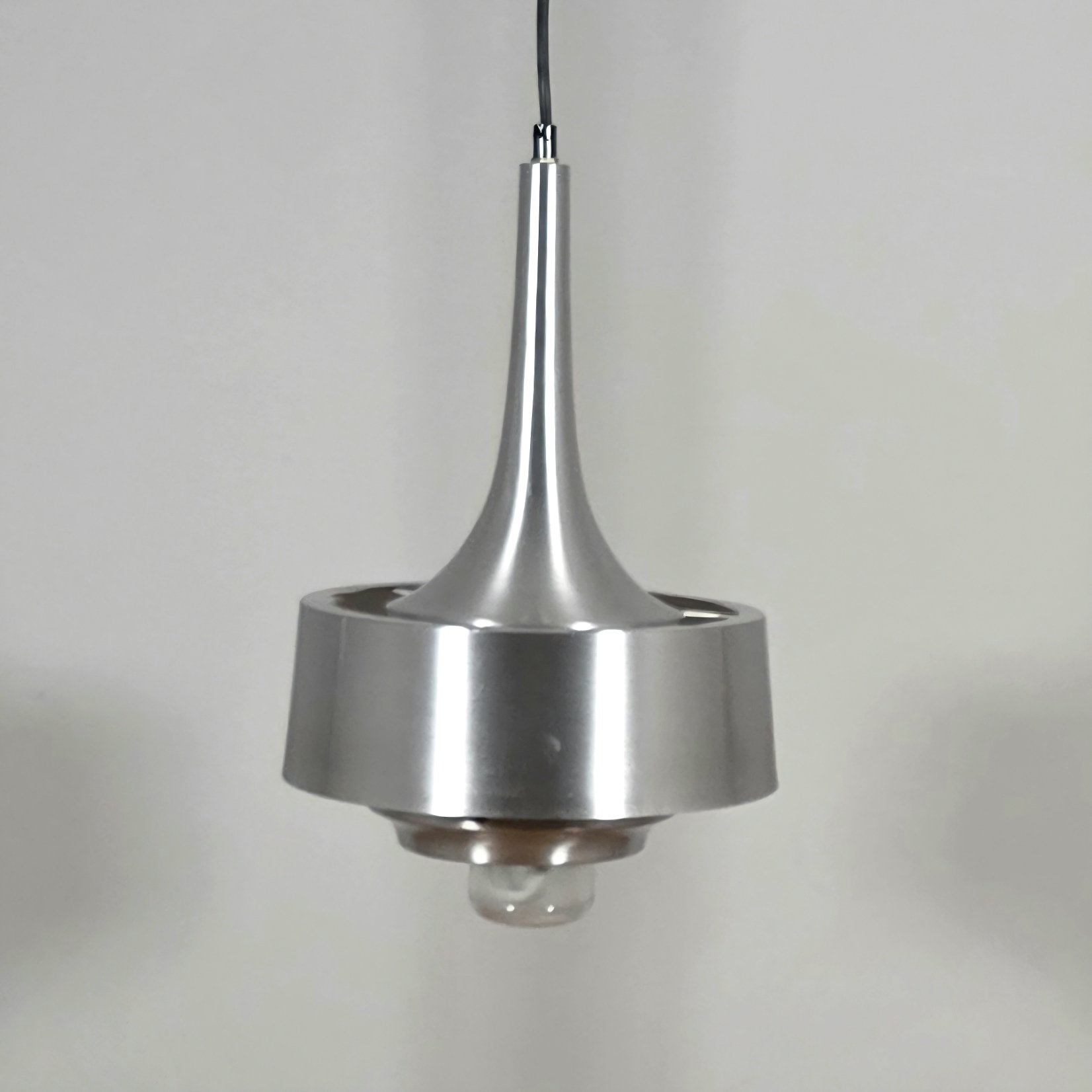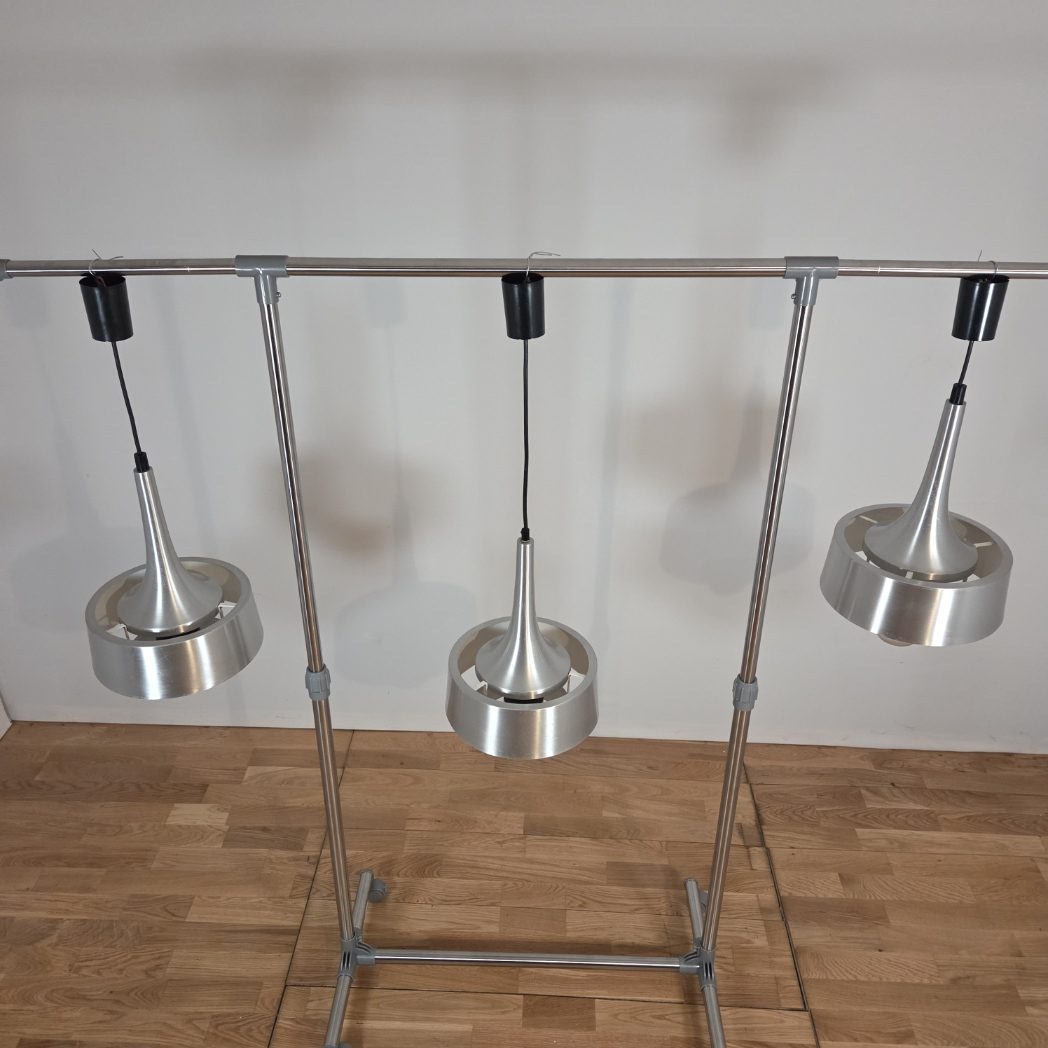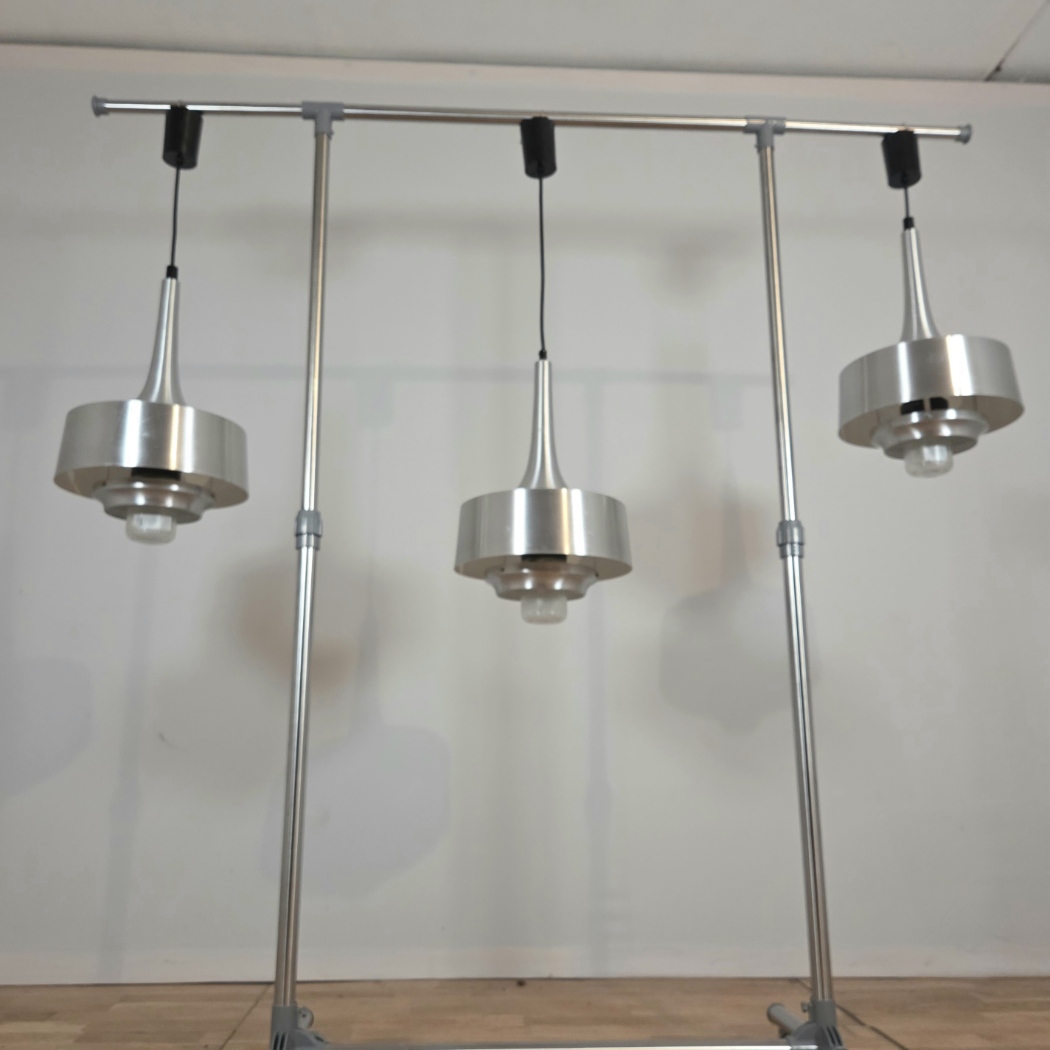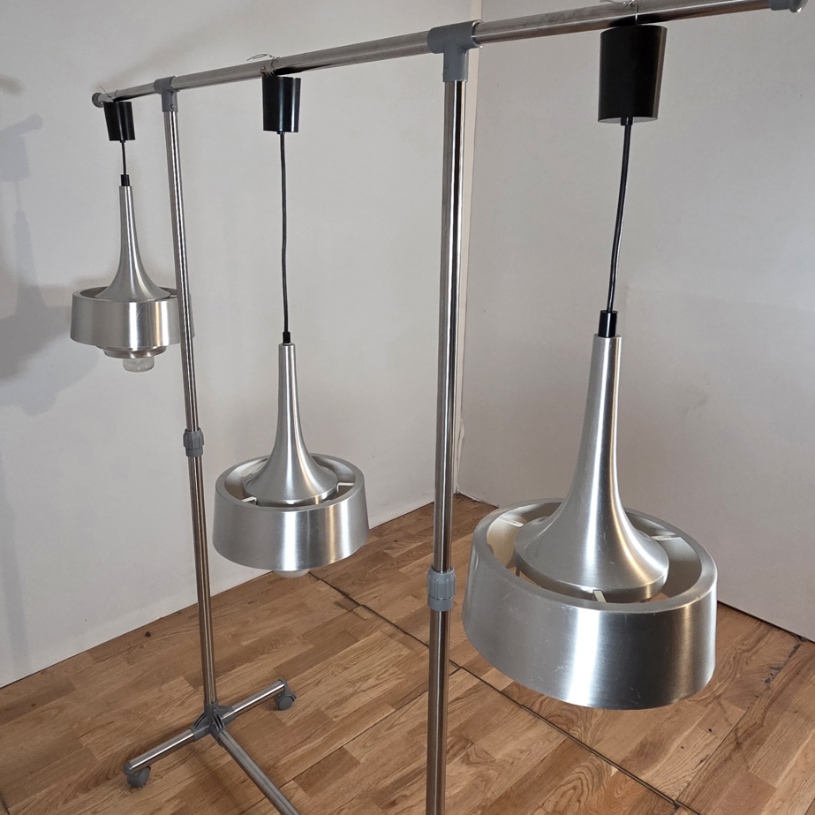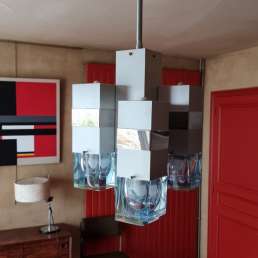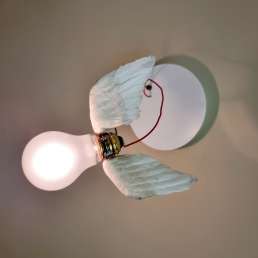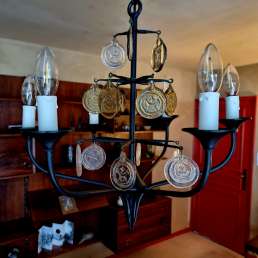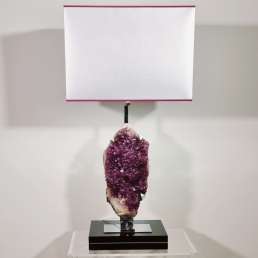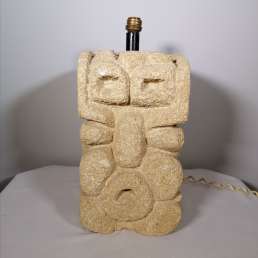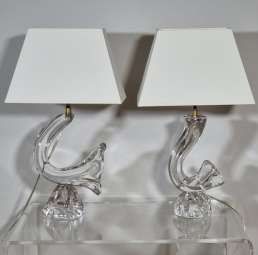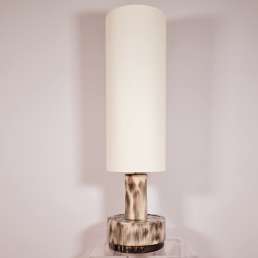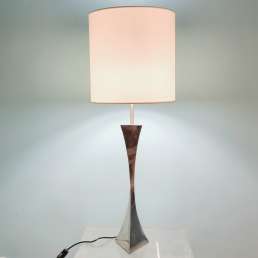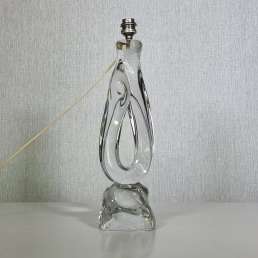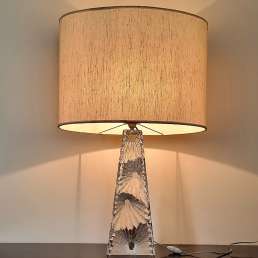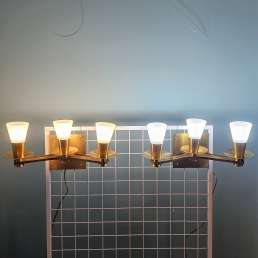Philips- attributed to Louis Kalff, set of 3 brushed aluminum and white lacquered pendant lights, circa 1960
Description
What I like
What I love about this set of 3 Philips pendants is, first of all, the simplicity of each one: this slightly flared band topped with a brushed aluminum trumpet, and the detail that makes all the difference: the ring suspended beneath the pendant, softening the overly bright light. Moreover, their number—3—allows for modulation in the space: already, the height of each pendant cord makes it possible to sculpt the light.I love the very Scandinavian aspect of this set of 3 pendants, as well as their obvious place within the design of the 1950s and 1960s.I love the fact that these wall lights can be attributed to the great lighting designer Louis Kalff: his collaboration with Philips produced many lamps and wall lights, always extremely refined and elegant. Their design allowed for wide light diffusion: beauty entered many interiors!
Technical description
PHILIPS – attributed to Louis KALFF (1897-1976)
Set of 3 pendant lights in brushed aluminum with white lacquered interior, black plastic. A black electrical cord and its plastic yoke cover hold an inverted trumpet-shaped element, which is supported by 3 L-shaped white lacquered brackets holding a Saturn-ring-shaped light diffuser with a slight step. A wide, slightly flared cylindrical lampshade rests on these brackets.
Circa 1960.
They are fitted with unusual Philips SL18 bulbs, with a fluted industrial glass cylinder.
Scratches, scuffs, interior of a trumpet repainted.
Dimensions and weight
Height: 40 cm – Width: 28 cm – Depth: 28 cm
Length of the wires including the cord cover: 17 cm, 24 cm – 40 cm
Weight: 5 kg (the wall lights are light but bulky and require significant packaging)
Mix & Match
This trio of pendants has an infinite simplicity and elegance: the shape of the lampshades evokes Audrey Hepburn’s hairstyles in films from the 1950s and 1960s. Their style and perfect size allow them to exist in a space without drawing all the attention; but if you look at them more closely, you notice that they are perfectly designed and executed, for example in the slight flaring of the lampshade, the stretching of the trumpet shape: a true work of art.
As a result, they fit into many interiors: starting with those from the 1950s or 1960s; they will highlight the veneer and lines of Joseph André Motte’s “Oeils” sideboard for Hûchers, complement our large armchairs with crisscrossed sides in the Streamline style, enhanced by the refinement of their Canovas fabric embroidered by Lesage!
But also with the creations of Pierre Guariche, particularly the G10 armchairs, in vibrant blue or the off-white boucle of Bisson Bruneel. Their sobriety allows them to pair with more angular designs, like Sonja Wasseur’s Grass Hopper armchairs!
Finally, on the walls, they will illuminate Edgard Pillet’s Composition of 1950/1951, so colorful, as well as Enrique Broglia’s tapestry “Composicion metallica,” whose metallic palette will echo that of the brushed aluminium!
In stock
Description
To know more
The designer
Louis Christiaan Kalff (1897–1976) was a Dutch graphic designer, considered a pioneer of 20th-century industrial design. These pendants are solely attributed to him: he worked extensively for Philips, and the confirmed works are in the same spirit.
He quickly built up a varied artistic background, including object design, sculpture, ceramics and architecture, and began working for the household appliance company Philips in the advertising department in 1924. He quickly moved up the ranks. and becomes responsible. He will notably create the company logo.
In 1929 he created the Philips lighting design workshop and thus boosted the company’s sales. He would later become the artistic director of this company where he worked until his retirement in 1960.
During the 1930s, he was appointed head of the lighting department at the World Exhibition in Barcelona, Antwerp and Paris.
Although he has worked for many agencies, he remains a freelance designer.
The editor
Fascinated by demonstrations of Thomas Edison’s first incandescent lamp in 1879, Gerard Philips (1858-1942) sought his father’s help to purchase a small plot of land in Eindhoven, the Netherlands, to establish his own light bulb factory. After a year, Anton, Gerard’s younger brother, joined the company as a salesman and helped the company grow into the largest carbon filament producer in Europe. In 1912, Philips signed a historic contract with Tsar Nicholas I, who ordered 50,000 light bulbs for his Winter Palace in Saint Petersburg. The same year, Philips entered Euronext, the Amsterdam stock exchange.
From the beginning, Philips was an export-oriented company, which aspired to establish itself in the rapidly growing electricity sector. In 1914, Philips launched its famous NatLab, a research center dedicated to the exploration of physics and chemistry to develop numerous product lines. Two years later, Philips celebrated its 25th anniversary and was granted the title of Koninklijke Philips Electronics (Royal Philips Electronics) by the Dutch monarchy.
Over the decades, Philips has produced a very wide range of products, such as medical x-ray tubes, radios, electric shavers, televisions, cassette and CD players, VHS and DVD players and many others.
A beautiful and authentic set of 3 pendants at a fair price
This set of pendant lights has been carefully selected for its aesthetic qualities, its originality and its fair price. Our choice favors above all the acuity of the design, which allows an attribution to Louis Kalff, as well as their manufacturing quality, attested by their distribution by Philips, guarantees of an enhancement of your new acquisition in your interior and of a ability to interact with your furniture, to match and mix to create a unique decoration.
Buying vintage endant lights is surely a reasonable investment, such is the appetite for the 1960s/1970s.
Finally, buying vintage pendant lights preserves the resources of planet Earth.
Additional information
| Weight | 5 kg |
|---|---|
| Dimensions | 28 × 28 × 40 cm |










